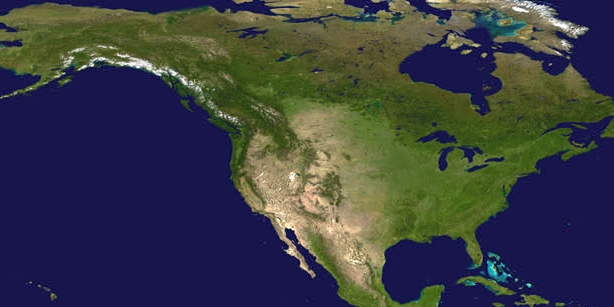

As catastrophic flooding impacts the Northeast, this week skies across the region and particularly along the central and eastern U.S. have also been affected by heavy smoke from wildfires burning across Canada that has continued to drift southward.
On Tuesday, July 18, 2023, air quality alerts were issued to nearly 70 million people across the Lower 48 states. While some of the smoke affected the West and Midwest, including most of eastern Montana, eastern Nebraska, and northwestern Minnesota, by this time, the majority of it had spread to the eastern U.S.
Unhealthy (Code Red) air quality was observed in Georgia on July 18, and air quality deemed Unhealthy for Sensitive Groups (Code Orange) was observed across parts of North Carolina, South Carolina, Tennessee, New York, Connecticut, Vermont, and New Hampshire.
At the same time, another round of storms brought even more rain to the Northeast this week as multiple rivers, creeks, and streams throughout the region are still flooding. With the ground still saturated from previous storms last week, flash floods were seen throughout the region, particularly in New York and Vermont.
Additionally, waves of slow-moving thunderstorms pushed through parts of the Midwest and South Tuesday night that dropped several inches of rain through where Kentucky, Illinois, and Missouri meet at the convergence of the Mississippi and Ohio rivers, prompting Flash Flood Warnings and Flood Watches in southern Illinois and western Kentucky.
On the morning of Wednesday, July 19, Kentucky’s Governor, Andy Beshear, declared a State of Emergency due to widespread flooding, and tweeted that “...we’re working to assess the damage and respond…we will get through this together.” The towns of Mayfield and Wingo were hit particularly hard with torrential rains, forcing some people from their homes and prompting several water rescues. According to the Kentucky State Mesonet, in Mayfield, 11.28 inches of rain had fallen in less than 24 hours on Wednesday. Western Kentucky has been experiencing a drought that local meteorologists believe may have worsened the effects of the flooding, since there was no time for the ground to soak up the heavy rain.
The same day in central North Carolina, a powerful tornado ripped through more than a dozen miles, destroying homes and injuring residents, according to officials. According to NOAA’s National Weather Service, a preliminary damage survey indicates that it was an EF3, with peak winds up to 150 miles per hour. It's the first EF3 tornado ever observed in central North Carolina in the month of July and the strongest twister for this time of year on record in the state.
NOAA satellites have been closely monitoring this weather. GOES East (GOES-16) tracked the storms in near real-time. It also measured water vapor that was transported in the atmosphere to the Northeast, and tracked the storms that developed.
During a major flooding event, local forecasters and first responders rely on satellite data, along with other tools like aerial mapping, to understand the extent of the damage. NOAA flood products help identify where flooding may be occurring and aid officials in determining where to employ often limited resources during a flood. Data from NOAA’s geostationary and polar-orbiting satellites are merged to create detailed and comprehensive flood zone maps. These maps help FEMA and first responders determine where to focus their efforts. They also allow for insight into where water is receding. This highly valuable information is given to community officials to help them determine, in combination with other critical resources, when it is safe for people to return to their homes.
NOAA’s Joint Polar Satellite System (JPSS) measured the moisture in the air and total precipitable water helping forecast what areas would be severely impacted. Satellite data is used to produce flood maps of areas to help determine where to send aid.
Both GOES East and GOES West (GOES-18) have been monitoring the wildfires in Canada as well as the smoke they are emitting, which continues to flow into the continental U.S. periodically. The Joint Polar Satellite System’s NOAA-20 and Suomi NPP satellites also play an important role in detecting and tracking wildfires, especially in remote regions, where many of the current Canadian wildfires are raging. Their high spatial resolution imager detects smaller and lower-temperature fires and also provides nighttime fire detection. The data from these satellites is also critical for accurate predictions by NOAA smoke models, which are used by fire crews, first responders, and air traffic controllers.
From fires to floods, NOAA satellites will be watching.
